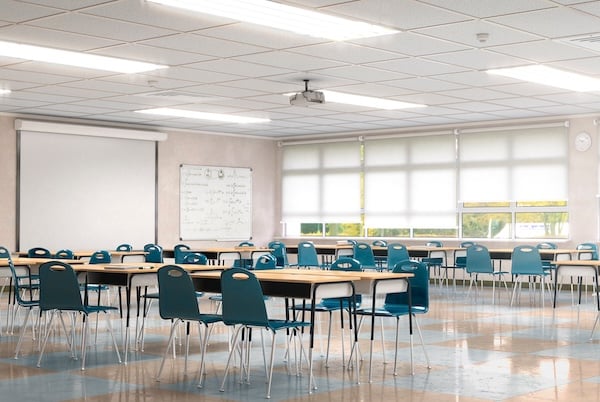Published on
Bridging the Gap: Nurturing Cultural Intelligence in the Classroom for Success in a Diverse Workplace

We live in the world where economic globalization, demographic shifts and technological advancements have brought about a significant diversification of the workforce, not only in the United States (U.S. Bureau of Labor Statistics 2015, Colby and Ortman) but also on a global scale. These changes require us to rethink traditional approaches to management, communication and even marketing. At the core of this transformation is a new understanding of cultural diversity and its applications for organizational dynamics and efficiency (Martin and Nakayama 2015).
Educational institutions must ensure their graduates are sufficiently prepared to thrive in an ever more diverse workforce. This encompasses excelling in environments that encompass a wide array of differences beyond traditional categorizations such as race, ethnicity and gender. Cultural differences are not limited to the international setting. Culture is how individuals define and perceive their identities, and this process is contextual, not static; hence, it is complex. In other words, cultural differences go beyond distinctions between countries and encompass the rich inner heterogeneity of human social organization (Baldwin et al. 2006). To succeed, students must cultivate the ability to navigate diverse cultural identities and perspectives deftly and develop the capacity to adapt and meaningfully engage in culturally rich workplaces.
This is the part where cultural intelligence and related concepts of intercultural competence and intercultural communication competence come into place. Cultural intelligence (CQ), as defined by Ang et al. (2007), is an individual’s capacity to function and manage effectively in diverse cultural settings, emphasizing adaptability and success in varied cultural contexts. Intercultural competence, according to Hammer (2012), refers to an individual’s proficiency in understanding and adjusting their behavior to account for cultural differences and similarities. It entails a deeper comprehension of diverse cultural norms and practices.
Intercultural communication competence, as described by Kim (1991), highlights an individual’s internal capability to manage challenging aspects of intercultural communication including cultural disparities, unfamiliarity, intergroup dynamics and associated stress. It emphasizes the effective navigation of communication across diverse cultural boundaries. Altogether, these concepts emphasize recognizing one’s cultural identity, understanding its contextual nature and comprehending and effectively managing cultural disparities.
Understanding and cultivating these competencies collectively empower individuals to navigate the intricacies of a globalized world, facilitating successful interactions and collaborations across cultures. Consequently, employers worldwide are actively seeking graduates who possess these competences to thrive in the global working landscape. Intercultural communication not only enriches a workplace’s knowledge capital but also fosters understanding and amplifies employee engagement. It equips individuals to communicate adeptly, mitigate organizational conflicts and nurture harmony and integrity within a culturally diverse workforce (Yusof et al. 2019).
For educational institutions, it is essential to teach students not only to understand cultural differences in all their complexities but also how to manage them. Numerous studies demonstrate that mere exposure to cultural differences is not enough; we are all already exposed to them. Building cultural competence requires deliberate and guided effort (Hammer 2012, McBride et al. 2020, Torras and Bellot 2017).
Bennett’s Developmental Model of Intercultural Sensitivity (DMIS) (Bennett 2004, 2013, Bennett and Hammer 2017, Van Hook 2000) is a framework that helps individuals understand their approach to and perception of cultural differences. It describes a continuum of stages through which individuals progress in their intercultural sensitivity and competence. This model underscores the socially constructed nature of identities, allowing for negotiation and change in self-identification, defining the others and understanding their perspectives.
Within Bennett’s DMIS, individuals move from ethnocentric stages dominated by their own cultural worldview (denial, defense and minimization of differences) to ethnorelative stages, where differences are viewed without threat (acceptance, adaptation and integration of differences). Mahoney and Schamber (2004) demonstrate that students transition from ethnocentric to ethnorelative stages not merely through comprehension of cultural differences but by actively engaging in activities that analyze and evaluate these differences.
This process, crucially guided by instructors, involves tailored interventions and genuine conversations adjusted to students’ perception of cultural differences. Only through this approach can students effectively analyze, evaluate and progress in their intercultural sensitivity, marking a transformative shift in their cultural awareness and competence.
DMIS model’s stages align with the cultural intelligence and intercultural competence. As individuals move from the ethnocentric to ethnorelative perspective, they learn to function better in diverse cultural settings and manage better cultural differences, adapt their behavior to cultural differences and communicate effectively across cultures, hence becoming more culturally intelligent and interculturally competent.
It should be noted that DMIS model is not without some critique, when researchers show an overlap in the development stages and question its assumption of linear progression, so it should be taken as guidance not directive (Zafar at al. 2013, Perry and Southwell 2011). At the same time, it still provides a general framework and starting point to integrate the valuable skills of cultural intelligence and intercultural competence into educational practices.
As mentioned earlier, educators play a pivotal role in fostering cultural competence and intercultural sensitivity among students. The process begins with educators embodying the traits they seek to instill in their students. Educators must practice and demonstrate self-reflection, mirroring the continuum of intercultural sensitivity themselves. They model and encourage perspective-taking and non-judgmental approaches, inviting students to be aware of their biases and assumptions.
Unspoken assumptions about cultures are brought to light, and educators explicitly consider cultural differences while providing feedback or facilitating discussions. They create opportunities for discussion about various culturally determined communication styles and the impact of cultural identities on thought processes, opinions and behaviors, and foster a tolerance for the ambiguity common in the culturally diverse environments (Dimitrov et al., 2014; Mellizo, 2018).
Through various activities, educators must highlight the importance of understanding how individuals learn about their own culture and about other cultures, placing value not only on the what but also the how. By recognizing the value of diversity and expanding its concept beyond traditional categories, educators encourage students to view differences as a valuable resource. Students are guided to identify potential areas of misunderstanding that cultural differences have informed and to understand the influence of cultural similarities and differences on behavior and learning (Bennett, 2013; Altan, 2018; McLean & Ransom, 2007) through various reflective exercises that encourage them to research a diversity of perspective, and to engage in critical analysis and self-reflection.
Integrating multiple disciplinary perspectives, educators highlight the clash of truths and help students recognize the context in which events occur, considering various cultural viewpoints. Critical thinking is cultivated by encouraging students to understand influence of individual identities (their own and others’), personalities, and socioeconomic backgrounds on perceptions and judgments. Educators emphasize empathetic communication and the platinum rule: treating others the way they want to be treated, furthering intercultural understanding and effective communication (Bennett, 2013; DeTurk, 2001).
To sum up, educators play a critical role in promoting cultural competence and intercultural sensitivity among students. By embodying these qualities, fostering self-reflection, emphasizing the value of diversity and encouraging critical thinking and empathetic communication, educators guide students toward a more nuanced and respectful understanding of diverse cultures and perspectives. Deliberate and guided efforts in education facilitate the development of intercultural competence, allowing students to navigate and thrive in diverse cultural contexts.
References
Altan, M. Z. (2018). Intercultural sensitivity. Journal of Intercultural Communication, 46(1), 1-17.
Ang, S., Van Dyne, L., Koh, C., Ng, K. Y., Templer, K. J., Tay, C., & Chandrasekar, N. A. (2007). Cultural intelligence: Its measurement and effects on cultural judgment and decision making, cultural adaptation and task performance. Management and organization review, 3(3), 335-371.
Baldwin, J. R., Faulkner, S. L., Hecht, M. L., & Lindsley, S. L. (Eds.). (2006). Redefining culture: Perspectives across the disciplines. Routledge.
Bennett, M. J. (2004). Becoming interculturally competent. Toward multiculturalism: A reader in multicultural education, 2, 62-77.
Bennett, M. J. (2013). Basic Concepts of Intercultural Communication, Second edition. Nicholas Brealey Publishing.
Bennett, M. J., & Hammer, M. (2017). A developmental model of intercultural sensitivity. The international encyclopedia of intercultural communication, 1(10).
Colby, Sandra L., & Ortman, J. M. (n.d.). Projections of the size and composition of the U.S . population: 2014 to 2060. https://www.census.gov/content/dam/Census/library/publications/2015/demo/p25-1143.pdf
DeTurk, S. (2001). Intercultural empathy: Myth, competency, or possibility for alliance building?. Communication Education, 50(4), 374-384.
Dimitrov, N., Dawson, D. L., Olsen, K. C., & Meadows, K. N. (2014). Developing the Intercultural Competence of Graduate Students. Canadian Journal of Higher Education, 44(3), 86–103.
Hammer, M. (2012). The Intercultural Development Inventory: A new frontier in assessment and development of intercultural competence. In M. Vande Berg, R. M. Paige, & K. H. Lou (Eds.), Student Learning Abroad (pp. 115–136). Stylus Publishing.
Kim YY (1991) Intercultural communication competence: A systems-theoretic view. In: Ting-Toomey S, Korzenny F (eds) Cross-cultural interpersonal communication. Sage, Newbury Park, pp 259-275
Mahoney, S. L., & Schamber, J. F. (2004). Exploring the application of a developmental model of intercultural sensitivity to a general education curriculum on diversity. The Journal of General Education, 311-334.
Martin, J. N., & Nakayama, T. K. (2015). Reconsidering Intercultural (Communication) Competence in the Workplace: A Dialectical Approach. Language and Intercultural Communication, 15(1), 13–28.
McBride, A. E., Bellamy, D. E., & Knoester, M. (2020). The theory and practice of developing intercultural competence with pre-service teachers on-campus and abroad. Theory Into Practice, 59(3), 269–278.
McLean, P., & Ransom, L. (2007). Building intercultural competencies: Implications for academic skills development. In Teaching international students (pp. 57-74). Routledge.
Mellizo, J. M. (2018). Applications of the developmental model of intercultural sensitivity (DMIS) in music education. Topics for Music Education Praxis, 2, 46-67.
Perry, L. B., & Southwell, L. (2011). Developing intercultural understanding and skills: Models and approaches. Intercultural education, 22(6), 453-466.
Torras, E., & Bellot, A. (2017). Intercultural Sensibility in Online Teaching and Learning Processes. International Association for Development of the Information Society, 20.
U.S. Bureau of Labor Statistics. (2015). Labor force projections to 2024: The labor force is growing, but slowly: Monthly Labor Review. U.S. Bureau of Labor Statistics. https://www.bls.gov/opub/mlr/2015/article/labor-force-projections-to-2024.htm
Van Hook, C. W. (2000). Preparing Teachers for the Diverse Classroom: A Developmental Model of Intercultural Sensitivity.
Yusof, N., Cheah Lynn-Sze, J., & Kaur, A. (2019). Post graduate students insights into understanding intercultural communication in global workplaces. Innovations in Education & Teaching International, 56(1), 77–87
Zafar, S., Sandhu, S. Z., & Khan, Z. A. (2013). A critical analysis of ’Developing intercultural competence in the language classroom’by Bennett, Bennett and Allen. World Applied Sciences Journal, 21(4), 565-571.



